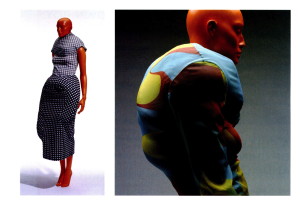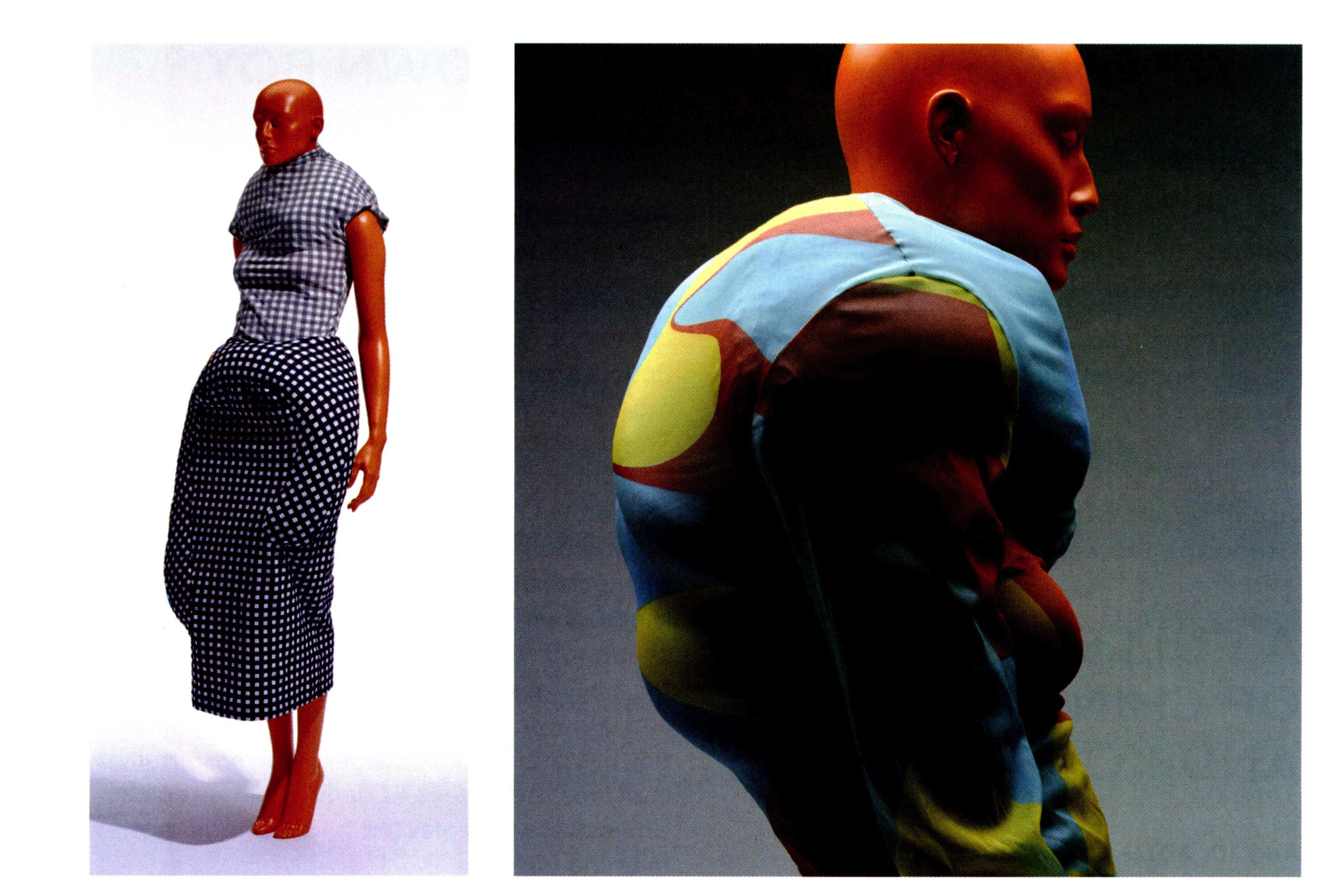Back in the late 20th century, the word on the street about Japanese fashion was that it had the lowest f*ckability points in the world. “I wouldn’t want to bed a girl wearing Comme des Garcons.” A guy I used to date said that, but then he was a paeleolithic rugby player whose idea of womens’ clothing consisted of pink micro minis and white high heels. Don’t get me wrong: I loved him, truly I did. After we broke up, I made it a point to observe and listen to the fashion opinions of muscle-bound, healthy young men – they seemed to be on to something. My conclusion: the nation’s fashion designers may be a big deal in Paris and Milan, but they were inflicting heavy collateral damage on the nation’s dating scene. A girlfriend of mine who went on a date wearing her first, uber snazzed Yohji Yamamoto, came home crying because the guy had fingered her voluminous, many-layered long skirt and sighed in frustration: “and how the hell am I supposed to take this off?” Sad, isn’t it.

On the other hand, this guy was playing right into Yamamoto’s scheme of what clothes should be about. You weren’t supposed to take the skirt off, because you weren’t supposed to look at women in that way. And women shouldn’t give in to anything as vapid and frivolous as dating, either. The idea behind Japanese fashion – from 1981 when Yohji Yamamoto and Rei Kawakubo’s Comme des Garcons made their Paris Collection debuts – to about 2003 – was that clothes should make you think. Think and ponder, with hands behind the back, pacing to and fro or something. Like a monk or a philosopher, someone who was naturally quiet and rarely lustful, whose body broadcasted ideas, not physicality.
Strangely enough (or not strangely at all, depending on your point of view), Japanese designers always had Japanese womens’ best interests in mind. Yohji Yamamoto, whose creations defined Japanese fashion for a quarter of a century, said the starting point of his career was a deep and abiding wish to aid working women. His mother had raised him single-handedly with a tiny dressmaking business in Shinjuku (his father was called to serve in WWII, and killed 7 months before the surrender) and Yamamoto grew up watching her work to the very dregs of existence. “I wanted to ease the pressure on my mom, and working women in general,” he said. “I wanted to make their lives a little better. Whenever I see a woman on the street, looking tired or a little depressed, I want to run up to her and ask: ‘how can I help you?”
Having said that however, Yamamoto added that the sight of a woman in heels caused him to shudder, along with tightly cinched waists and shoulder pads – all iconic items of the professional woman (at least in the west). “Those women are out of my range,” he said. “They don’t need my vision.” Yamamoto’s clothing are famed for the “space of air” between the fabric and skin, and the way skirts and pants seemed to flow and form a silhouette of their own, while withholding any information about the body that wears them.
The wish to help Japanese women is the essence of modern Japanese design. From the Koshino sisters (Junko, Hiroko and MIchiko) and Rei Kawakubo and Issey Miyake to Isao Kaneko, iconic Japanese designers in the fevered heydeys of the late 1980s sought to liberate Japanese women from gender stereotypes, the shackles of tradition and mental slavery. All hailing from the same generation, and having observed how the patriarchal Japanese society had wreaked havoc on the nation and inflicted untold suffering on its women, Japanese designers worked toward the same ideal, that their clothing should enlighten and empower the girls.
Their notions of doing that however, differed vastly from those in the west. At around the same era, London-based Vivienne Westwood and Katherine Hamnett were emphasizing female sexuality in all its sexy splendor – big breasts, tiny waists and full hips were prominently featured, and models strode the runways in brutish spikey heels. In Japan, designers went the opposite route. Rei Kawakubo’s Comme des Garcons (“Like the Boys”) was about enveloping the female body in heavy folds of dark, forbidding colors (Kawakubo’s famed words: “I work with different shades of black” made headlines at the 1986 Paris Collection), accentuating faces that had on little or no make-up, with hairstyles that channeled those of labor camp victims. Anything excessive, superflous, or prettily feminine were hacked off and left to die on the cutting room floor.
Speaking of concentration camp, Issey Miyake made great waves in the early 90s when he came out with a striped ensemble that bore a striking resemblance to Auschwitz prison uniforms. Priced at no less than 60,000 yen, critics were divided between outright adoration and spluttering indignation. Miyake loved flaunting his bad-boy, who-gives-a-f*ck personality, and he had plenty of opportunities to do so. By this time, Japanese designers had become fashion celebrities on European runways, and it was rumored that Karl Lagerfeld knelt at the feet of Rei Kawakubo and got a freezing look for his trouble. Meantime on the archipelago, women paid exorbitant sums for clothes that made them look weird, maimed, homeless or all three, and left their men scratching heads in bewilderment. New York Times fashion photographer Bill Cunningham remarked that Japanese designs of this period recalled something mysterious and medieval, as if the elaborate layers of fabric hid something fantastically secretive or horribly injured.
Now, Japanese fashion goes hand in hand with Japanese geek culture, and “kawaii” is the watchword. Philosophical, cerebral threads have become a thing of the past: Yohji Yamamoto declared bankruptcy three years ago, though his flagship shop in Aoyama continues to do business and his spirit is carried on by his daughter Limi (who has her own brand). Comme des Garcons has formed a snug little empire consisting of disciples like Junya Watanabe and Tao Kurihara, while branching out into the organic food line via a collaboration with the famed Rose Bakery in Paris. The Japanese have become much more relaxed about fashion, thanks mainly to the marketing ploys of Japan’s own, homegrown casual wear brand Uniqlo, which the young Japanese love as much as overseas discount brands like H&M and 21 Forever. As for Japanese fashion’s f*ckability points, they’ve gone up. Way up.
Still, many of us feel a twinge of longing for the days when we worked and saved for a single piece of wardobe from a Japanese “maison,” fully aware that our boyfriends would hate it but secretly reveling in the deconstruction of the lines and absolute absence of coquetry that was in itself, a statement that went beyond mere feminism. In a perfect world, said Yohji Yamamoto, women were so pure and devoid of worldly desires that to get close to them was an experience akin to praying in a temple on top of a lofty mountain. His words would probably make zero sense to an Akiba chick in a pink micro mini. But we have the legacy, and this legacy could perhaps, become a pointer to the way Japanese women see themselves in the future.

“…the young Japanese love as much as overseas discount brands like H&M and 21 Forever.”
I think you mean Forever 21.
It could be. Although, Kaori-san may be intentionally poking fun at the brand name.
http://semiaperiodic.herwagender.celerar.nergens.apostaxis.steenrod.www.0l.ro/weiderma/stalinist/gezouten/